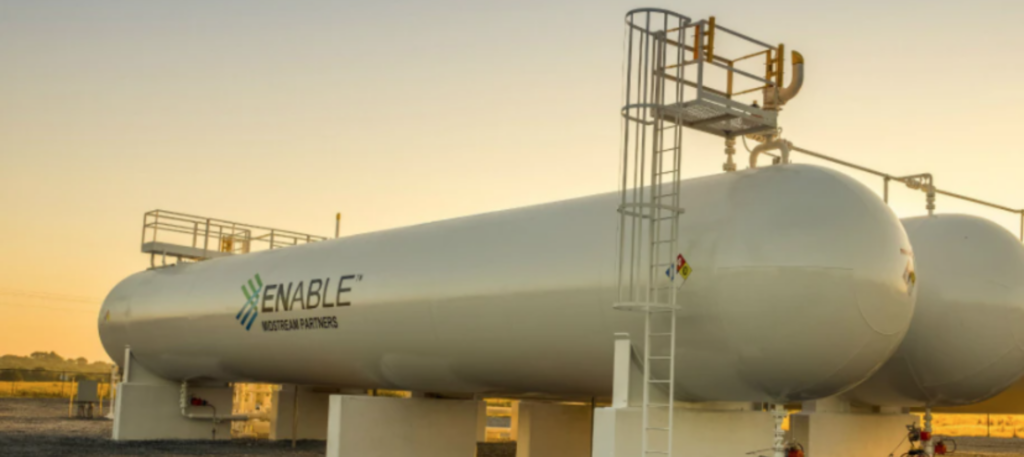
Pat Patton
Commercial Product Manager
The following article was originally published in the Dallas Morning News
In West Texas, there’s a toll-free superhighway for “produced water”.
Take a drive on U.S. Highway 285 southeast from Carlsbad, N.M., heading to Pecos in West Texas and you’ll be driving atop a portion of the largest proven oil reserves in the United States. Along the drive, much of the scenery will look the same. Drilling rigs are numerous and tower high above thinly rooted desert shrubs. Above-ground pipeline and power line easements follow the road on either side. Look too long and drift from the lane and the sound of rumble strips will draw your attention back to the road ahead. Trailer trucks, pickups and construction vehicles, all branded with corporate logos, pass in both directions. Ahead in the distance you will see a light gray haze on the horizon that fades into bright blue skies and stratus clouds. Roll down the window and you will smell diesel exhaust and an unmistakable whiff of sulfur. This is the Delaware Basin.
You would hardly know the point where you crossed into Texas as no noticeable demarcation exists. However, a well-trained eye might start to notice saltwater disposal (SWD) facilities appearing on both sides of the road with increasing regularity. Facility signs mark the entrances, advertising to passing water-hauling trucks looking to unload their tankers. When you start seeing an overabundance of SWD facilities, congested along the border like state-line liquor stores, that is when you know you are on Texas soil.
A fundamental characteristic of oil production is the conterminous production of water. The Delaware Basin generates the largest volume of oil in the nation. Accordingly, it also produces the largest volume of “produced water.” Produced water contains high concentrations of salt, heavy metals and other toxic substances. Thus, careful disposition is required. SWDs are wells that are drilled expressly for the purpose of reinjecting the produced water into the ground as a means of disposal.
Why the disproportionality between Texas and New Mexico? The explanation is simple: regulation. Permitting SWDs in Texas is easy and quick compared with New Mexico. This is one of the reasons why each day an estimated 1.8 million barrels (75.6 million gallons) of New Mexico produced water is sent to any one of the numerous SWDs across the Texas state line. The volume is growing daily.
It would be correct to assume that longer transportation distances equate to higher costs for oil and gas operators. So why not dispose of produced water nearer to the origination point? The answer lies in a curious rule passed by the New Mexico Oil Conservation Division (OCD) in 2016.
The New Mexico OCD, the regulating body for SWDs in the state, enacted a rule prohibiting new shallow SWDs in the majority of the New Mexico Delaware Basin. The ruling outlawed new SWDs in the Delaware Mountain Group formation, which is the primary subsurface disposal zone in the basin. The basis for the 2016 rule was research showing that shallow produced water injection was interfering with producing oil wells in proximal formations. The ruling was viewed by many as draconian and the Delaware Mountain Group Restricted Area as arbitrary.
The Texas Railroad Commission, by contrast, has no prohibition on new shallow SWDs, and the time required to obtain an injection permit is markedly faster. That disparity created business opportunities for hungry companies with an appetite for interstate produced water logistics. Deep disposal is not restricted in New Mexico but formations with suitable geology are so deep this option is typically viewed as risky and uneconomic.
And so, each day more produced water finds its way to Texas. An estimated 34% of New Mexico Delaware Basin produced water is sent out of state for disposal. This is the status quo in the Delaware Basin. Without this escape route, some New Mexico Permian oil production would grind to a halt. Water moves freely across the border, untaxed, loosely regulated and inconspicuously reported.
An increase in the magnitude and frequency of earthquakes, with causal links to injection, has prompted action by regulators on both sides of the border. Disposal curtailments on both shallow and deep injection have reduced allowable daily injection rates. This disproportionately affects Texas operators who have to compete for space already occupied by New Mexico produced water. This compounds pressure challenges that Texas operators are facing when drilling through shallow injection zones. Meanwhile, New Mexico operators reap the benefits of lower pressured shallow reservoirs and comparably lower seismic risk by shipping their waste to Texas.
The state of New Mexico continues to receive tax revenue from continued hydrocarbon development. This is made possible only by Texas and its laissez-faire attitude regarding shallow disposal. In return, Texas asks for nothing.
Texas water midstream companies profit from New Mexico water, and this brings its own suite of benefits to the state. But that is not enough. Seismicity linked to injection is increasing, and the recent 5.4 magnitude quake in the Delaware Basin (the third largest recorded event in Texas) has already triggered new curtailments and restrictions. Once again, Texas operators will feel the pinch.
Solutions do exist. New Mexico could revisit the Delaware Mountain Group Restricted Area and allow shallow injection in specified areas. That alone will not change the situation. SWDs are drilled, pipeline built and businesses established under the existing condition. Furthermore, the New Mexico permitting process is onerous, and getting a permit approved quickly is difficult due to resource constraints at the New Mexico Oil Conservation Division. There is no quick fix.
Accordingly, Texas should impose an import tax on New Mexico produced water. This is not uncommon in the industry. In Ohio, out-of-state produced water disposal is taxed at a hefty 20 cents per barrel, much higher than the 5-cent-per-barrel duty for water originating in-state, according to an Ohio Department of Natural Resources fact sheet.
In the Delaware Basin alone, imposing a 20-cent-per-barrel tax on interstate water could generate more than $140 million annually in tax revenue for Texas. Given that interstate water transport and disposal is occurring in other parts of the state (most notably from Louisiana to East Texas in the Haynesville Bossier play), actual tax revenue could be much higher.
In the Delaware Basin, a tax would undoubtedly drive operators to pressure New Mexico into lifting the arbitrary Delaware Mountain Group Restricted Area and allow for shallow injection in certain parts of the basin. It might also tip economic scales and drive more operators to invest in pipeline projects or increase adoption of recycled produced water.
If Texas had implemented this tax starting in 2017, the state would have generated more than $400 million thus far. The volume of produced water sent to Texas is growing daily. Horizontal production on both sides of the border will continue for the foreseeable future. Seismic events are increasing in magnitude and frequency.
What is clearly visible is the disconnect between state regulatory bodies. Texas operators bear the consequences while New Mexico operators reap the reward. A Texas state tax on out-of-state produced water seems reasonable in any case.
EMPOWERING SMART WATER MANAGEMENT
B3 Insight is building the definitive source for water data. We empower smart water management with data-driven intelligence for responsible and profitable decisions about water resources. Whatever your needs, B3 Insight’s OilfieldH2O can positively impact your water management and drilling completions – contact us at [email protected] or 720-664-8517 to learn more.




